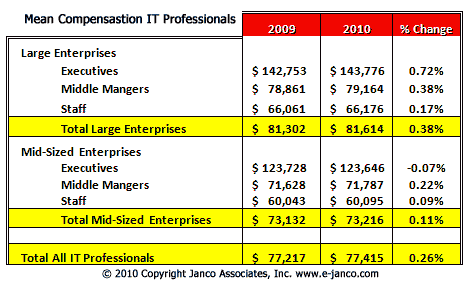Gartner, Inc. has highlighted the key predictions that herald long-term changes in approach for IT organizations and the people they serve for 2010 and beyond.
Gartner's top predictions for 2010 showcase the trends and events that will change the nature of business today and beyond.
Gartner’s top predictions for 2010 and beyond include:
By 2012, 20 percent of businesses will own no IT assets. Several interrelated trends are driving the movement toward decreased IT hardware assets, such as virtualization, cloud-enabled services, and employees running personal desktops and notebook systems on corporate networks.
By 2012, India-centric IT services companies will represent 20 percent of the leading cloud aggregators in the market (through cloud service offerings). Gartner is seeing India-centric IT services companies leveraging established market positions and levels of trust to explore nonlinear revenue growth models (which are not directly correlated to labor-based growth) and working on interesting research and development (R&D) efforts, especially in the area of cloud computing. The collective work from India-centric vendors represents an important segment of the market's cloud aggregators, which will offer cloud-enabled outsourcing options (also known as cloud services).
By 2012, Facebook will become the hub for social network integration and Web socialization. Through Facebook Connect and other similar mechanisms, Facebook will support and take a leading role in developing the distributed, interoperable social Web. As Facebook continues to grow and outnumber other social networks, this interoperability will become critical to the success and survival of other social networks, communication channels and media sites.
By 2014, most IT business cases will include carbon remediation costs. Today, server vitalization and desktop power management demonstrate substantial savings in energy costs, and those savings can help justify projects. Incorporating carbon costs into business cases provides a further measure of savings, and prepares the organization for increased scrutiny of its carbon impact.
In 2012, 60 percent of a new PC's total life greenhouse gas emissions will have occurred before the user first turns the machine on. Progress toward reducing the power needed to build a PC has been slow. Over the course of its entire lifetime, a typical PC consumes 10 times its own weight in fossil fuels, but around 80 percent of a PC's total energy usage still happens during production and transportation.
Internet marketing will be regulated by 2015, controlling more than $250 billion in Internet marketing spending worldwide. Despite international efforts to eliminate "spam," marketing "clutter" is abundant in every marketing channel. Pressure for greater accountability means the backlash from annoyed consumers will eventually drive legislation to regulate Internet marketing. Companies that focus primarily on the Internet for marketing purposes could find themselves unable to market effectively to customers, putting themselves at a competitive disadvantage when new regulations take effect. Although experiencing high growth, vendors who focus solely on, and sell predominately to, Internet marketing solutions could find themselves faced with a declining market, as companies shift marketing funds to other channels to compensate.
By 2014, over 3 billion of the world's adult population will be able to transact electronically via mobile or Internet technology. Emerging economies will see rapidly rising mobile and Internet adoption through 2014. At the same time, advances in mobile payment, commerce and banking are making it easier to electronically transact via mobile or PC Internet. Combining these two trends creates a situation in which a significant majority of the world's adult population will be able to electronically transact by 2014.
By 2015, context will be as influential to mobile consumer services and relationships as search engines are to the Web. Whereas search provides the "key" to organizing information and services for the Web, context will provide the "key" to delivering hyperpersonalized experiences across smartphones and any session or experience an end user has with information technology. Search centered on creating content that drew attention and could be analyzed. Context will center on observing patterns, particularly location, presence and social interactions. Furthermore, whereas search was based on a "pull" of information from the Web, context-enriched services will, in many cases, prepopulate or push information to users.By 2013, mobile phones will overtake PCs as the most common Web access device worldwide. According to Gartner's PC installed base forecast, the total number of PCs in use will reach 1.78 billion units in 2013.
By 2013, the combined installed base of smartphones and browser-equipped enhanced phones will exceed 1.82 billion units and will be greater than the installed base for PCs thereafter.
More information on the IT industry can be found at
www.SupportIndustry.com

